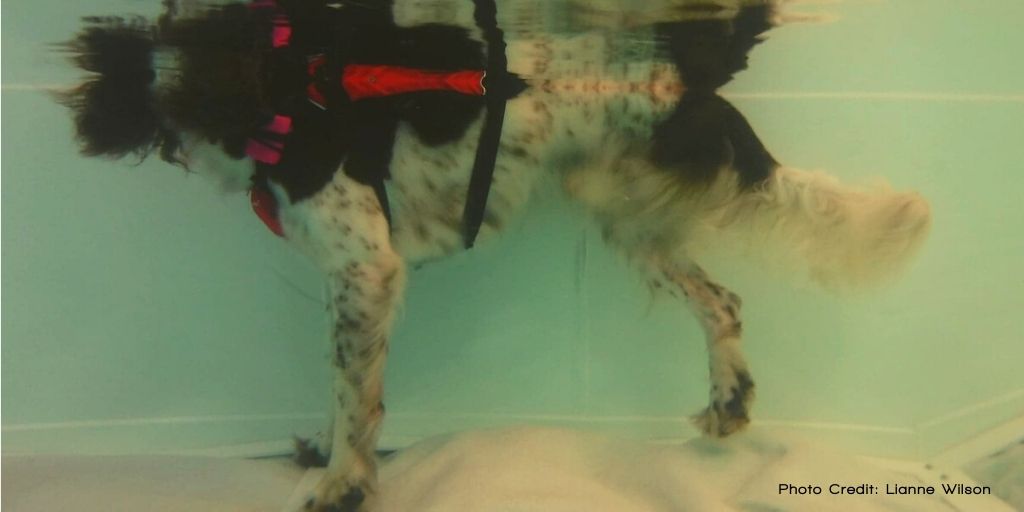We know that phantom limb pain occurs in as many as 80% of people who have had amputations, but does it also affect dogs to the same degree? Revisiting one of the webinars in our Small Animal Members portal, Rehabilitation of the Canine Amputee by Marinette Teeling, led me to revisit this question and this subject.
Phantom limb complex has three components that need to be differentiated: the first is phantom limb sensation, which is any sensation other than pain that the patient experiences as originating from the amputated limb. The second is stump pain, which is any pain localized around the remaining stump. The third component is, of course, phantom limb pain, which is pain that the patient experiences as coming from the amputated limb (Faisinger et al, 2000).
The Occurrence of PLP
In the literature on human amputations, phantom limb pain occurs in 60-80% of patients within the first two years after an amputation. For 10% of amputees, it continues throughout life (Probstner et al, 2010). In the acute stage, phantom limb pain may be confused with or overlap with stump pain, which is expected and quite normal post-operatively. Stump pain will, however, subside as healing occurs, while in 5-10% of patients phantom limb pain will persist and worsen, becoming a chronic neuropathic kind of pain (Nikolajsen et al, 2001).
In canine amputees, the numbers aren’t all that different, with owners reporting that 14% of amputees experienced pain for up to six months after the amputation, with some also showing behavioural changes. This suggests that the development of neuropathic pain may be delayed for months and that post-operative care and rehabilitation should continue well after the initial healing phase of the amputation (Rosati et al, 2017).
What are the Risk Factors for Developing PLP?
In humans, chronic pain before an amputation has been identified as a risk factor for the development of phantom limb pain. In this survey of canine amputees, dogs that experienced pain for more than a month before amputation were more likely to experience regular episodes of pain post-amputation. It seems that both in humans and in dogs, the use of pain medication before amputation had no effect on the experience of pain after amputation, as we might have hoped and expected. It also seems that psychological or physical stress plays a significant role in the development of phantom limb pain post-amputation, as was the case in 78% of patients experiencing pain in the survey. Stress should be considered a significant risk factor for the development of phantom limb pain.
The kind of pain that patients experienced pre- and post-operatively differed significantly. Before amputation owners described their pets’ pain as either waxing and waning or as persistent. One month post-amputation, owners were describing their pets’ pain as sudden and transient, with no persistent pain.
How does PLP affect Behaviour?
Owners also reported changes in their pets’ behaviour in the first three to six months after amputation. Changes included reduced activity levels, reduced playfulness, a negative emotional state, decreased participation in family life, a loss of appetite and reduced sleep. There was a decrease in their interaction with and friendliness towards other family pets and strange pets. Dogs showing these behavioural changes from three months to a year after amputation also tended to exhibit muscular twitching in the stump region, licking the stump, whimpering, yelping, restlessness, chewing the stump and scratching the stump. Additional symptoms that could be an indication of pain included tiredness, tachypnea and irritability. In about 10 – 20% of dogs there was an increase in aggression towards other animals and humans, both before and after amputation (Rosati et al, 2017).
Quality of Life
On the whole, however, owners felt that their pets adapted well to life with three limbs, with 94% of those surveyed saying their pets adapted ‘very well’. In total, 72% of dogs were mobile and ambulatory within a week post-amputation. There was a clear relationship between the ability to adapt and the frequency of pain episodes post-amputation, with higher adaptability associated with lower pain prevalence. However, 28% of dogs still needed help in becoming ambulatory, and 10% needed help in improving their adaptation and quality of life.
It is also interesting to note that 60% of owners felt that they had a better relationship with their pet post-amputation, despite feeling less free and independent than they had before. Most did not regret the decision to have the amputation performed.
Conclusion
It would seem that to give a dog the best quality of life post-operatively it is necessary to perform the amputation as soon as possible (when an amputation is necessary) so that the period of chronic pain before amputation is as short as possible. Swift action and effective pain control strategies promote a fast recovery and optimum return to function. The results of the study also suggest that amputation is a viable and good option and that owners are quite happy with the quality of life their pets experience post-amputation. This knowledge may help and encourage owners through the difficult amputation decision-making process.
References:
- Menchetti, M., Gandini, G., Gallucci, A., Della Rocca, G., Matiasek, L., Matiasek, K., Gentilini, F., & Rosati, M. (2017). Approaching phantom complex after limb amputation in the canine species. Journal of Veterinary Behavior, 22, 24-28. https://doi.org/10.1016/j.jveb.2017.09.010
- Boesch, J. M., Roinestad, K. E., Lopez, D. J., Newman, A. K., Campoy, L., Gleed, R. D., & Hayes, G. M. (2021). The Canine Postamputation Pain (CAMPPAIN) initiative: A retrospective study and development of a diagnostic scale. Veterinary Anaesthesia and Analgesia, 48(6), 861-870. https://doi.org/10.1016/j.vaa.2021.07.003


0 Comments